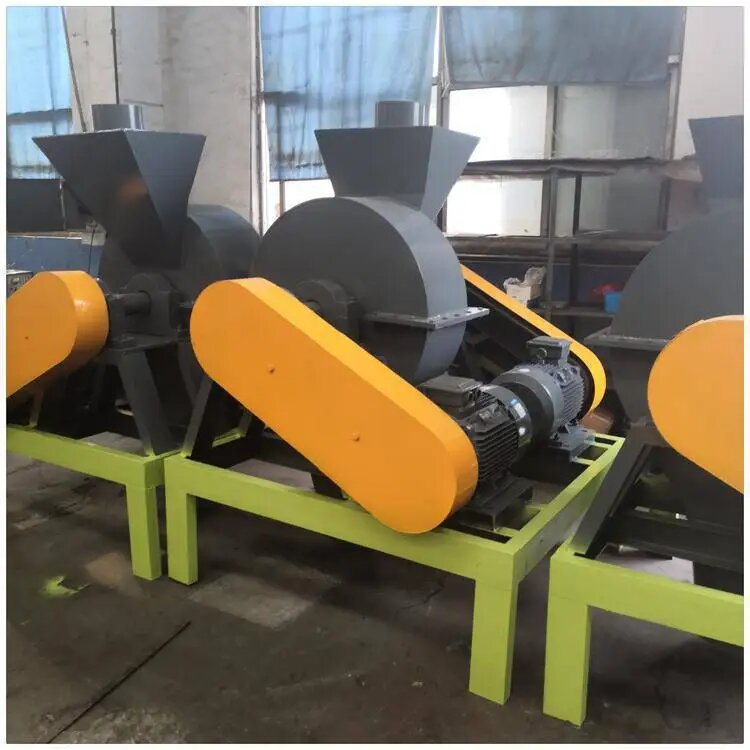Structure and working principle
Four-axis design: Equipped with four parallel rotating axes (two in pairs, usually two sets of tools rotate in opposite directions) and the shafts are equipped with staggered carbide tools.
Crushing mechanism: After the material enters the crushing chamber, it is captured by the rotating cutter and broken down into smaller particles through multiple forces such as shearing, extrusion, and tearing.
Power system: Driven by an electric motor, power is transmitted through a reducer or hydraulic system, ensuring high torque output to handle hard materials.
Core features:
Efficient crushing: Multiple shafts work together to handle higher capacity than single/twin shaft crushers, suitable for large volumes or high hardness materials (such as metal, plastic, wood, e-waste, etc.).
Uniform discharge: The tool clearance is adjustable to control the discharge particle size to meet the needs of subsequent sorting or recycling.
Strong durability: The tool is made of wear-resistant materials (such as SKD-11 alloy steel), and some models support automatic wear compensation.
Safety protection: Equipped with overload protection, emergency braking and anti-jamming device to avoid metal foreign objects damaging the equipment.
Selection reference
Capacity: Power (typically 11kW) and speed (35rpm) are selected according to the type of material (e.g. hardness, toughness).
Tool configuration: V-shaped, hook-shaped and other tools are suitable for different materials, and some models support quick replacement.
Auxiliary functions: automatic lubrication system, noise reduction design or explosion-proof configuration (for flammable materials) need to be considered.
Maintenance & FAQs
Regular maintenance: Check tool wear, bearing lubrication and belt tension, and clean up entanglements.
Troubleshooting: Check the power supply voltage and wiring tightness, measure the motor current, and troubleshoot mechanical blockages or overloads; After clearing the blocked material in the cavity, manually rotate the disc. If it still gets stuck, check the bearing status; Hydraulic models require detection of oil level, filter element, and oil pump pressure.
Jamming: Immediately stop the machine and reverse the shaft to discharge foreign matter.
Abnormal vibrations: Check tool balance or foundation tightening.
Uneven discharge: Adjust the tool clearance or check the moisture content of the material.




